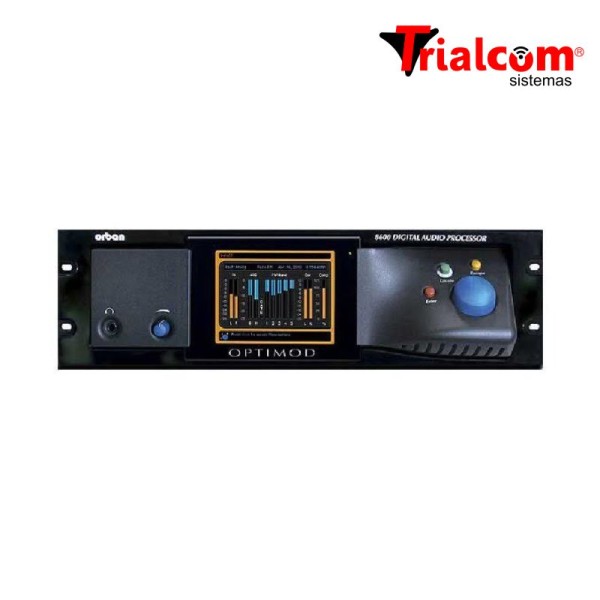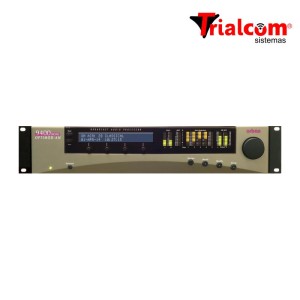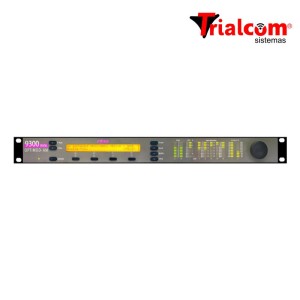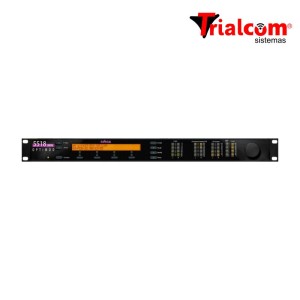Optimod-FM 8600
In the toughest competitive environment ever, a winning strategy includes OPTIMOD-FM 8600.
In the toughest competitive environment ever, a winning strategy includes OPTIMOD-FM 8600.
OPTIMOD-FM 8600 is Orban’s flagship processor and the next step beyond the OPTIMOD-FM 8500. Featuring versatile five-band and two-band processing for both analog FM transmission and digital media, the 8600 provides the industry’s most consistent sound, track-to-track and source-to-source. This consistency allows you to create a sonic signature for your station with the assurance that your signature will stay locked in, uniquely branding your sound.
Dramatically improved peak limiter technology decreases distortion while increasing transient punch and high frequency power handling capacity. Compared to the FM-channel peak limiter in OPTIMOD-FM 8500, the new peak limiter typically provides 2.5 to 3 dB more power at high frequencies, which minimizes audible HF loss caused by pre-emphasis limiting. Drums and percussion cut through the mix. Highs are airy. «Problem material» that used to cause audible distortion is handled cleanly.
While this design offers about the same loudness as 8500 processing, its main goal is to make FM analog broadcasts more competitive with the cleanliness, punch, and open high frequencies of the digital media against which FM analog transmissions now battle. The FM loudness wars represent 20th-century thinking; in the 21st century, the new competition is digital media. Thanks to its fresh, crisp sound, the 8600 helps level the playing field between analog FM and its ever more aggressive digital-only competitors.
The 8600 offers 8500-style processing too. This allows broadcasters to run favorite 8500 presets if they wish. Because the input/output delay of the new peak limiter is too long to permit talent to monitor off-air on headphones, 8500 processing is useful for remotes and outside broadcasts where off-air headphone monitoring is desired and the 8600’s low-delay monitor output cannot be brought to the talent.
The 8600 provides stereo enhancement, equalization, AGC, multiband compression, low-IM peak limiting, stereo encoding, and composite
limiting — everything that even the most competitive major market station needs to stand out on the dial.
Processing for digital media like netcasts and HD Radio is supplied standard. The FM and digital media processing paths split after the 8600’s stereo enhancer and AGC. There are two equalizers, multiband compressors and peak limiters, allowing the analog FM and digital media processing to be optimized separately. The bottom line? Processing that optimizes the sound of your FM channel while punching remarkably crisp, clean, CD-like audio through to your digital channel audience.
More than 20 excellent sounding, format specific factory presets get you started. You’ll find all of your favorite 8500 presets, plus new «MX» presets designed by Bob Orban and Greg Ogonowski to exploit the exciting possibilities inherent in the 8600’s new peak limiter technology. Although the factory presets are fully competent «out of the box», you can customize them with easy one-knob LESS-MORE control or with more than 60 advanced controls whose versatility will satisfy even the most finicky on-air sound designer.
If you have created custom presets for OPTIMOD-FM 8500, 8400, 8300, 5500 or 5300, you’ll find that they import perfectly into the 8600, retaining your carefully crafted sound.
If you choose to use the 8600’s superb DSP-based stereo encoder and composite limiter, be assured that they deliver an FM analog signal that is always immaculately clean and perfectly peak limited, with full spectral protection of subcarriers and RDS/RBDS regardless of the amount of composite limiting.
We haven’t forgotten pure analog FM broadcasters. An 8600FM model without digital radio processing is available at lower cost. Moreover, we offer an upgrade kit for 8500 and 8500FMs that is easily installed in the field by replacing the DSP board and CPU module. The upgrade requires no soldering or special tools.
Ethernet connectivity is standard, as is an easy to use PC remote control application that runs on Windows 2000 and higher and that can control many 8600s on a TCP/IP network. In addition, programmable contact-closure (GPI) control plus ACSII terminal control via the 8600’s RS232 serial and Ethernet ports and give you total freedom to interface the 8600 with your facility’s remote control infrastructure, whatever it might be.
User interface improvements round out the package. We started with the 8400’s easy-to-use joystick, knob and button navigation system and added a bright, active-matrix color LCD that makes it easier to program the 8600 from its front panel. The panel’s eye-catching new metallic blue styling makes the processor look as great in your rack as it sounds on the air.
For our European customers, a second generation ITU BS 412 multiplex power controller yields the best possible coverage while flawlessly complying with the standard. You can adjust it to maximize loudness within the constraints of the BS 412 standard or to produce less gain change at the expense of slightly lower loudness. New for the 8600 is the ability to apply MPX power gain reduction after the clippers so that the texture of the processing can include more «clipper sound» when desired. Regardless of how you adjust the multiplex power controller, you can be sure that you will always meet the BS 412 requirements flawlessly.







